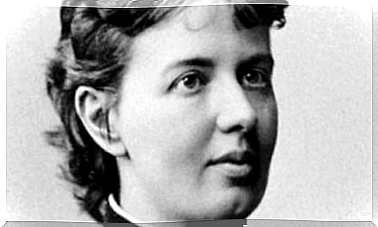11 Of The Best Ways To Treat Depression

There is not just one way to treat depression. Each person has their own black holes and hidden strengths. There are many different strategies that can be used to awaken these strengths and calm the desperation, the sleepless nights, the fear and the apathy. Everyone is a prisoner in their own prison, and not all cells can be unlocked with the same key.
When you are diagnosed with depression, something changes in you. On the one hand, you are relieved to finally get a medical diagnosis that can explain all the distress, fatigue, crying and grief. It is a starting point to get the help you need. But you also ask yourself the classic question – what now? Will my life be full of medication and therapy from this point?
“Black holes are not as black as they are painted. They are not the eternal prisons they were once seen as. Things can come out of a black hole both from the outside and possibly come out in another universe. ”
-Stephen Hawking-
Sometimes we have a limited picture of how depression should be treated. Antidepressants are not the only strategy, and sometimes they are not even necessary. This is something that only a professional can decide. It is also important to know that dealing with a debilitating psychological state is like a journey towards finding the best way home, towards returning to your own personal balance to regain the strength you lost. The following techniques can help people with depression on this journey.

1. Collaboration between different professionals
People are seeing more and more that primary hospital physicians prescribe antidepressants and anxiolytics too often. These doctors are generally the gateway to treatment for people seeking help. They are the first person they go to to say that they can not continue, that they need to sleep, relax, to stop crying so much. But they are not experts in mental disorders.
In order to treat depression properly and thoroughly, we need more strategies, more professionals to work together. It is important that medical centers also have psychologists and psychiatrists who can work in synchronization with primary care physicians. Even social workers are extremely helpful in most cases – do not forget that in recent years we have seen that the population most affected by depression are those with the least resources.
2. Cognitive behavioral therapy to treat depression
The most successful therapeutic approach to treating depression to date is cognitive behavioral therapy. When combined with medication, significant progress can be made.
This therapy focuses on the person’s thought patterns, breaks down irrational ideas and promotes a progressive change in thinking. Patients learn to regain control and be more logical and realistic.

3. Interpersonal psychotherapy
As we said before, there is not just one way to treat depression. There are many different ways and it is necessary to find the one that best suits the needs of the person. While cognitive behavioral therapy tends to be one of the most effective, there are other useful approaches as well.
Interpersonal psychotherapy is useful when depression is the result of problems in the patient’s interpersonal relationships (such as a broken relationship or the loss of a loved one). The goal is for the patient to address the stressful life events that happened, work on their self-esteem, and develop strategies to improve their relationships with others.
4. Emotionally focused therapy
Greenberg’s emotionally focused therapy is a combination of Rogerian humanistic therapy and Gestalt therapy. It is very useful in the treatment of depression with the aim of helping the patient to identify, work through and treat their emotions. The therapist provides a safe environment where the patient can deal with their anxiety and work through difficult emotions.
5. Physical training
People with major depression often lack the strength and motivation to swim, bike or go to a zumba class. But when possible, it is best for them to leave the house, feel the warmth of the sun, listen to the sound of the outdoors, and then go. Just go.
Something as simple as walking for 20 minutes a day can be very beneficial.

6. Eat well
Eating well will not make your depression go away, but it will strengthen your immune system and provide your brain with the nutrients needed to favor the release of neurotransmitters that will help you get better.
We recommend fresh fruits and vegetables, whole grains, omega-3 fatty acids and foods high in magnesium.
7. St. John’s wort
There are studies that suggest that St. John’s wort is a useful complementary tool for treating mild or moderate depression. Just remember to go to a specialist to find the right dose for you.
8. Get a different opinion
There are many patients who show no improvement after trying various pharmacological and psychological treatments. At this point, it is best to get a different opinion about your diagnosis. This is because personality disorders and other problems can hide behind depression and go unnoticed.
9. Social support
Medication can treat depression but not cure it. Psychotherapy can treat it and help the patient develop coping strategies, but it can also not cure it. What can then? To have the psychological support of others, to trust them and to feel understood and cared for. This will work with the rest of the strategies to make the treatment successful.
So let’s surround ourselves with people who can help us solve difficult situations.

10. New hobbies and interests
Your mind may not be receptive to finding new hobbies that motivate you and serve as reinforcement, but introducing small activities into your daily life that you enjoy that calms and interests you can be an effective strategy for dealing with depression.
Painting, writing, music and yoga are just a few examples of that kind of satisfying activity.
11. Mindfulness-based cognitive therapy
After going through a depression, the risk of relapse still exists. After two or three years, depression can come back and knock on your door again.
To prevent this from happening, mindfulness-based cognitive therapy is an ideal technique . You can use breathing techniques and meditation every day, to work through the negative thoughts that arise as weeds in your mind.
The most important thing is to understand that there is not just one way to treat depression – there are dozens, maybe even hundreds. You just have to find the combination of strategies that best suits your own needs. Seeking the help of a psychologist or a psychiatrist can lead you towards the light that these strategies offer.









